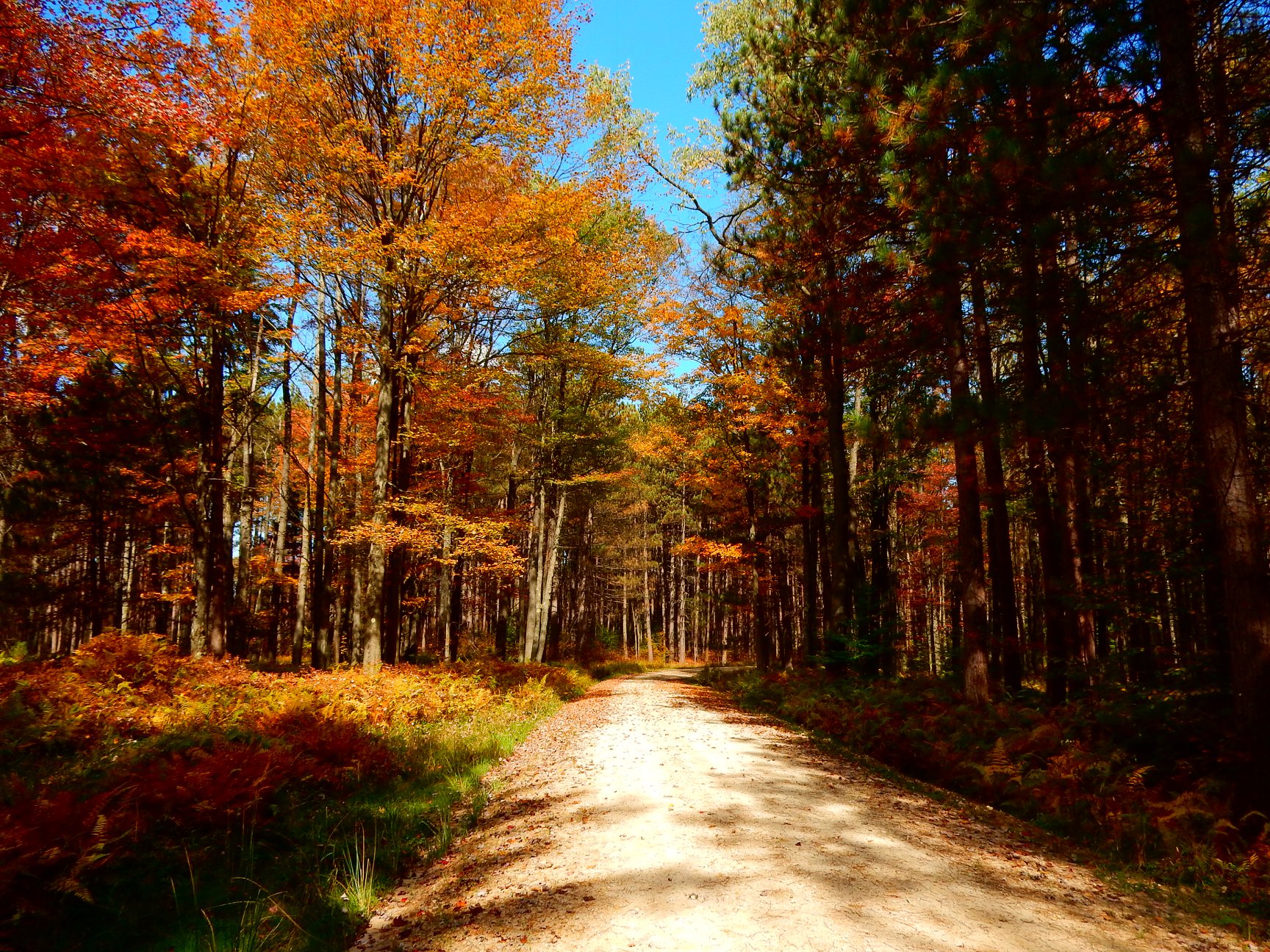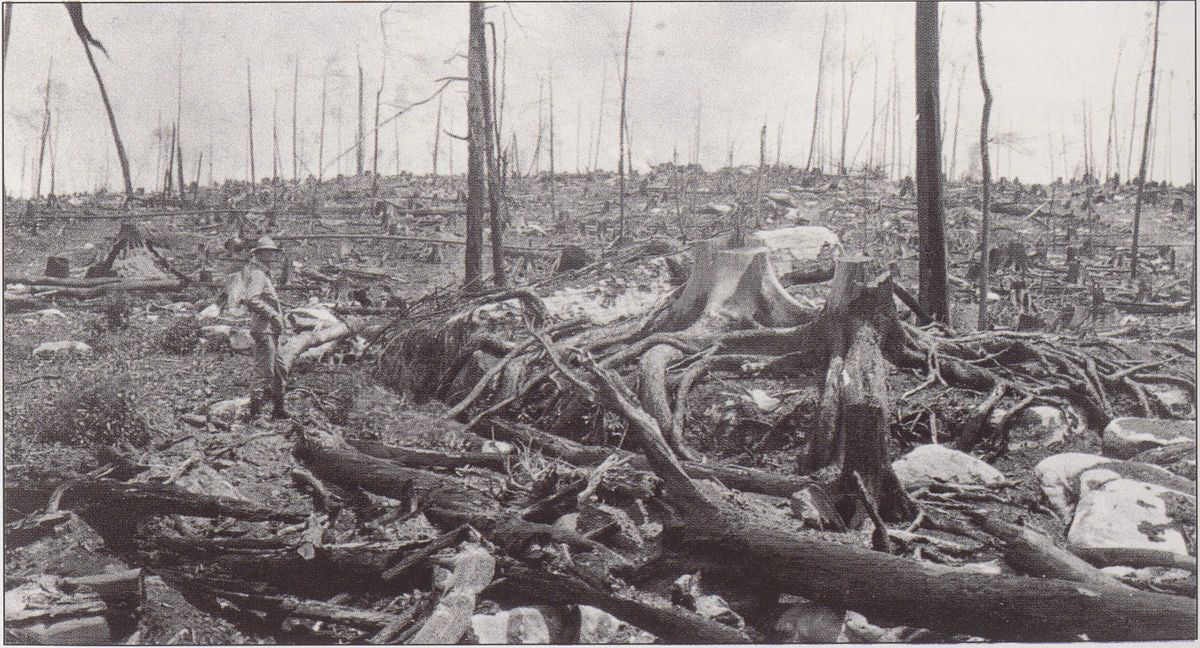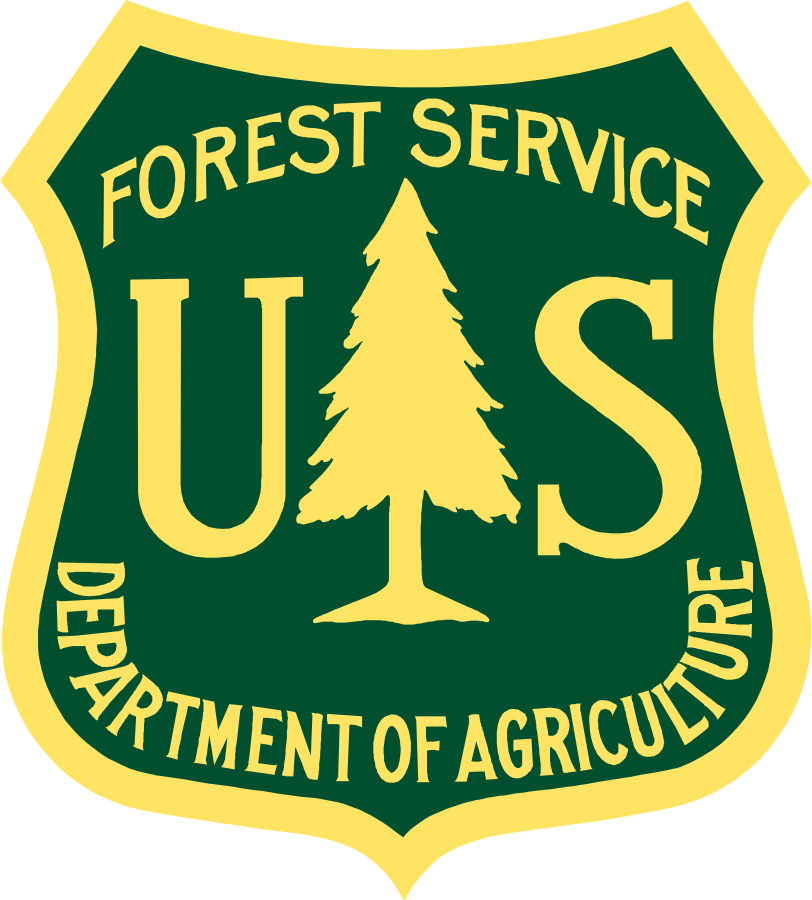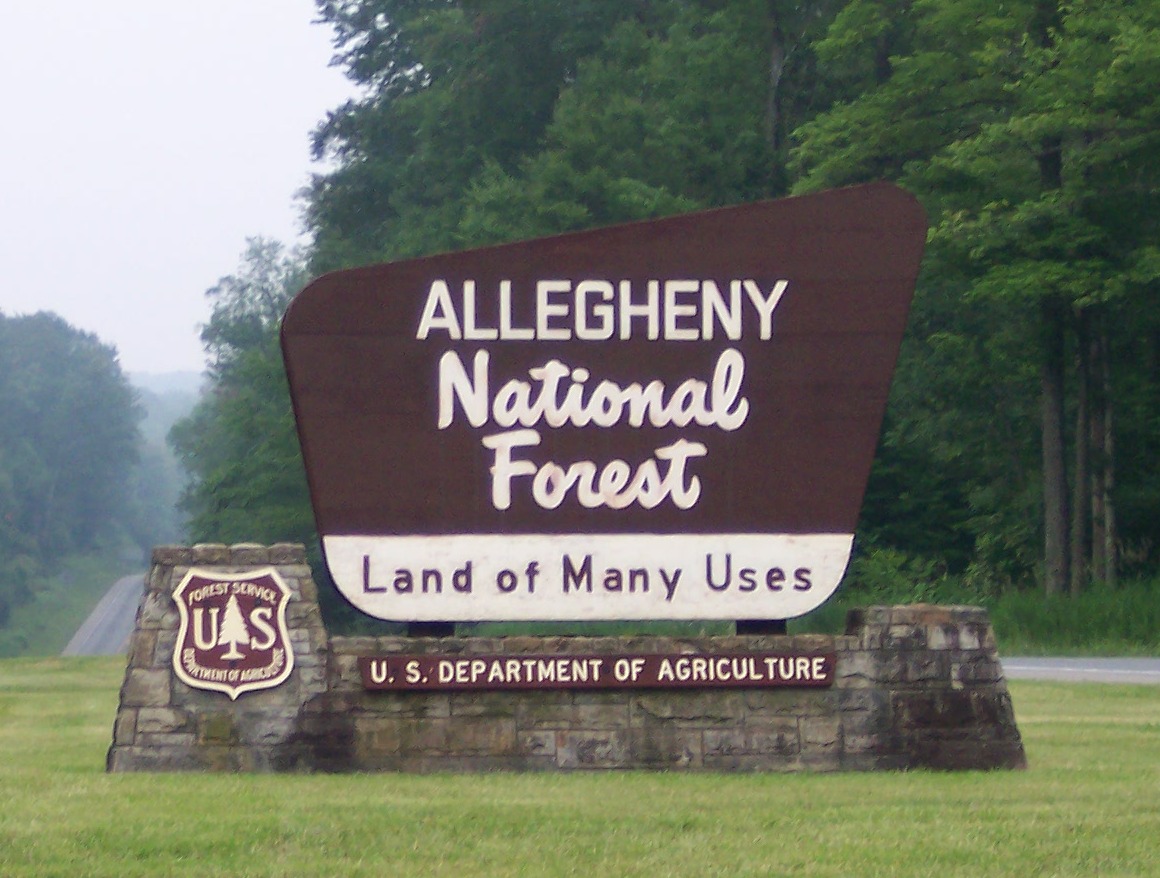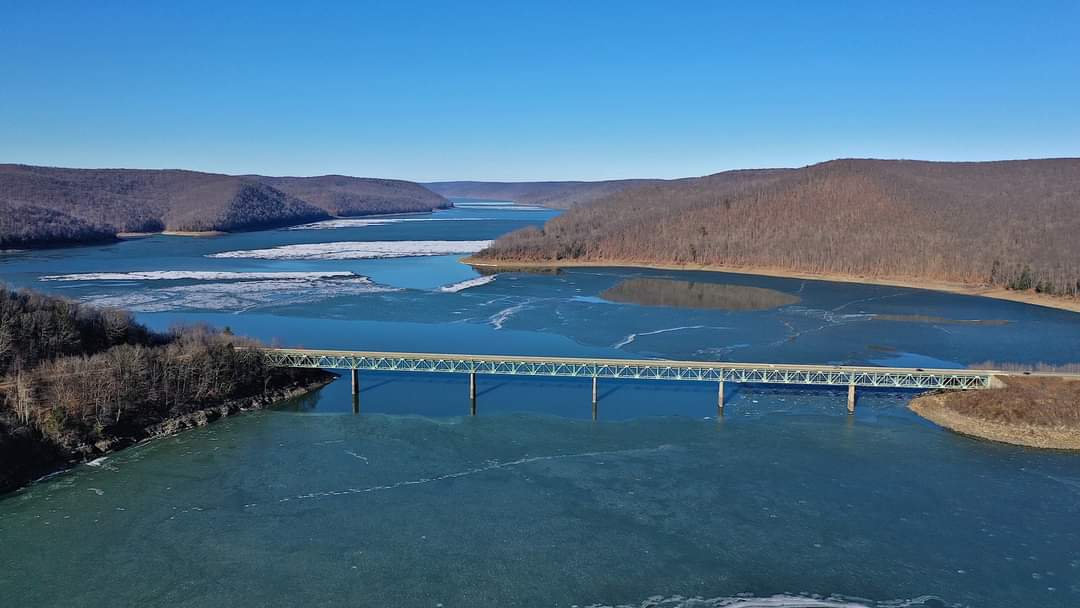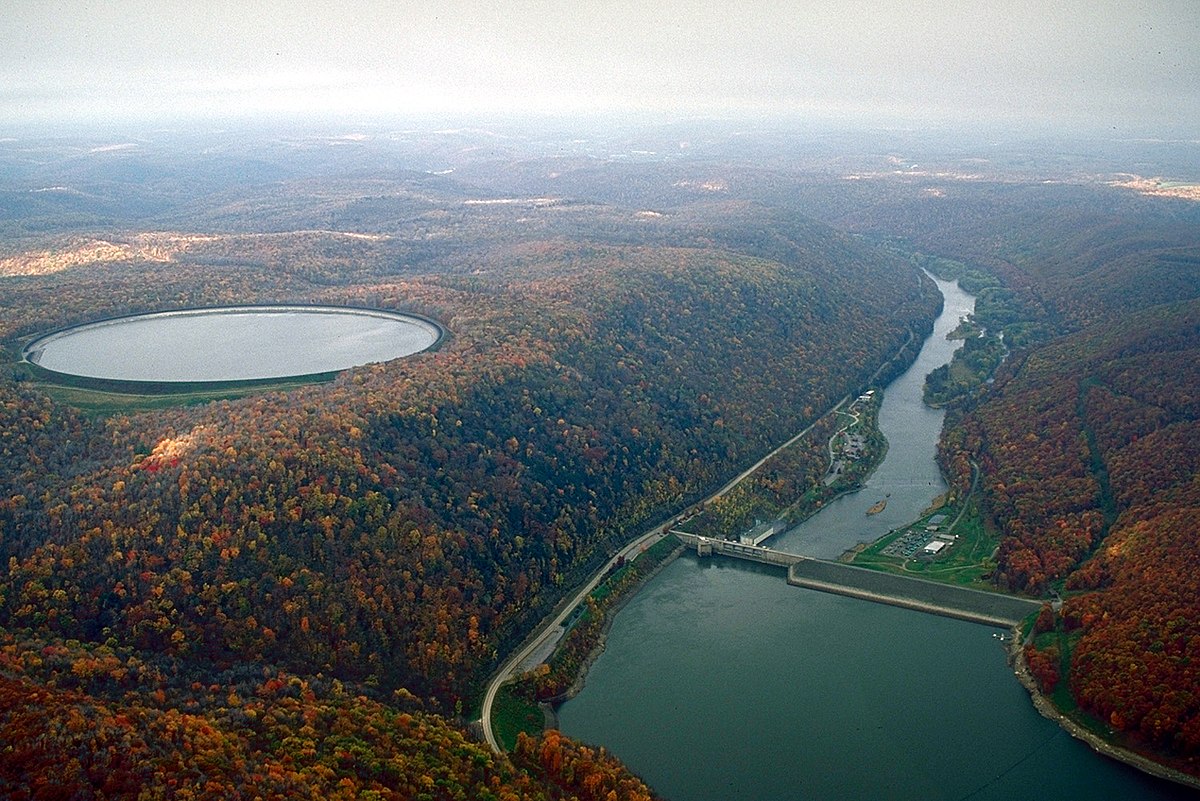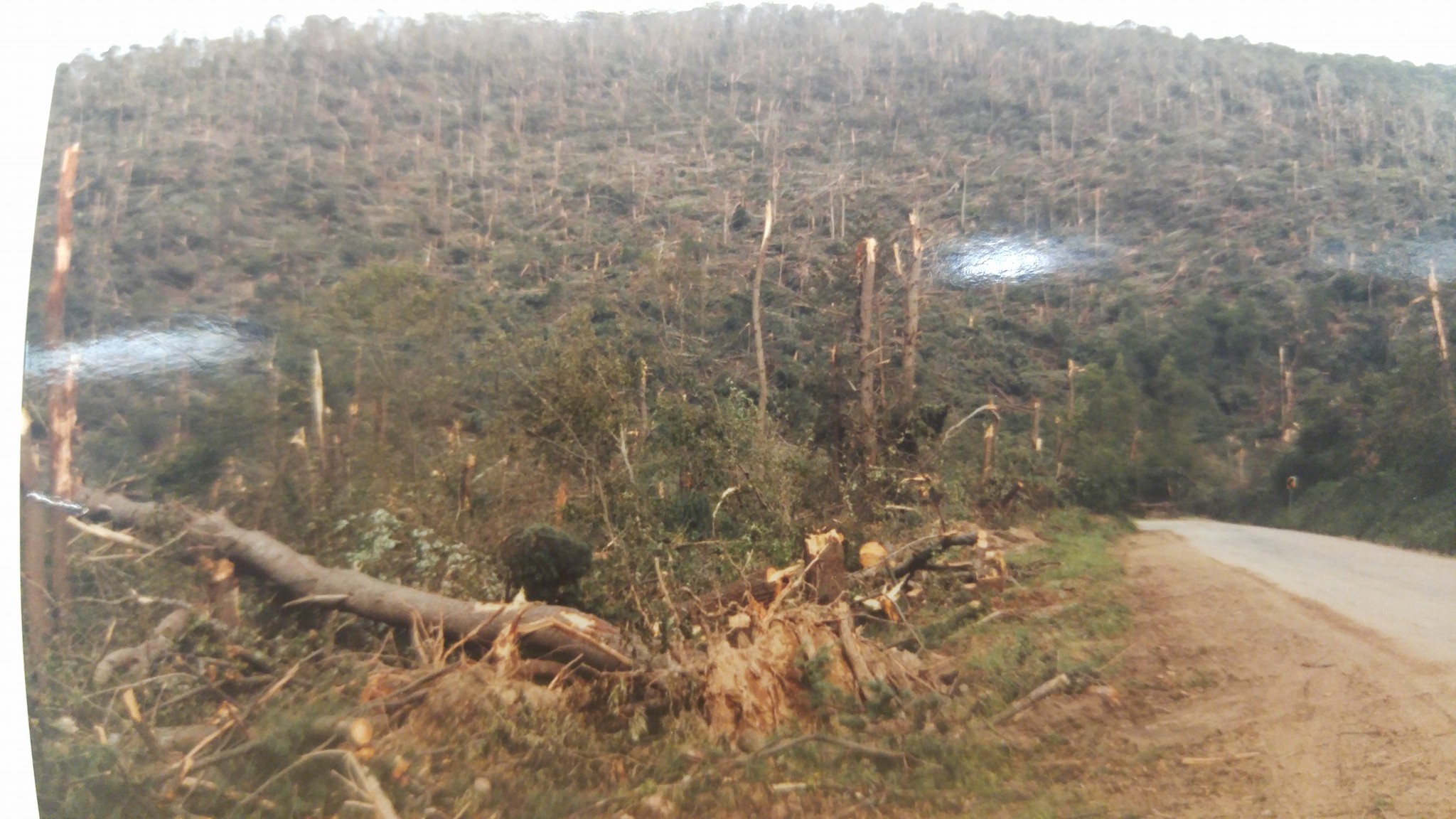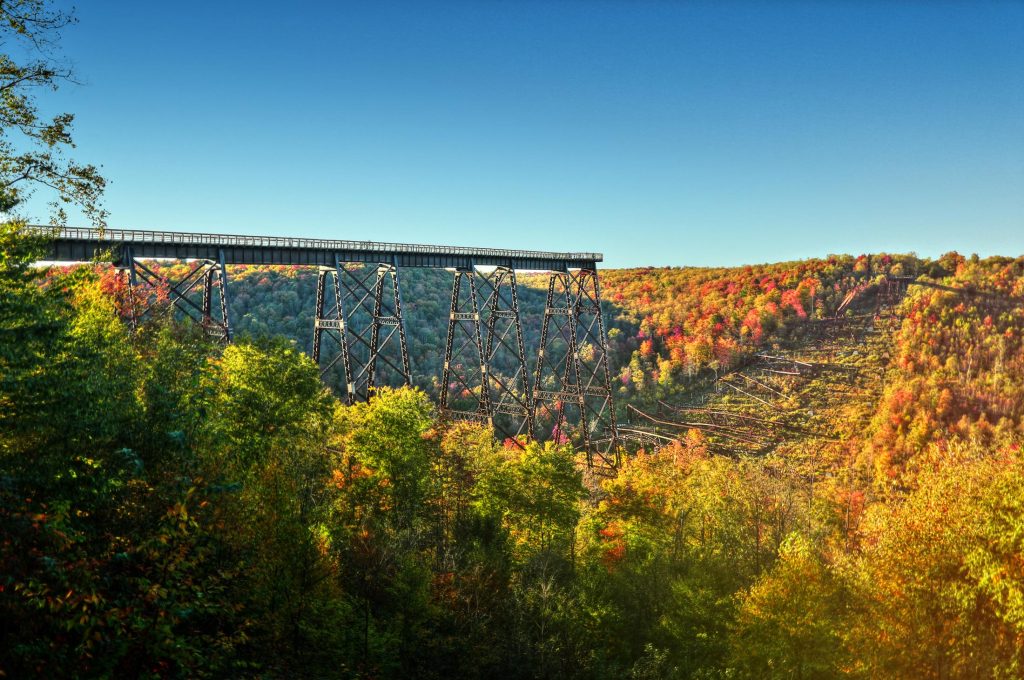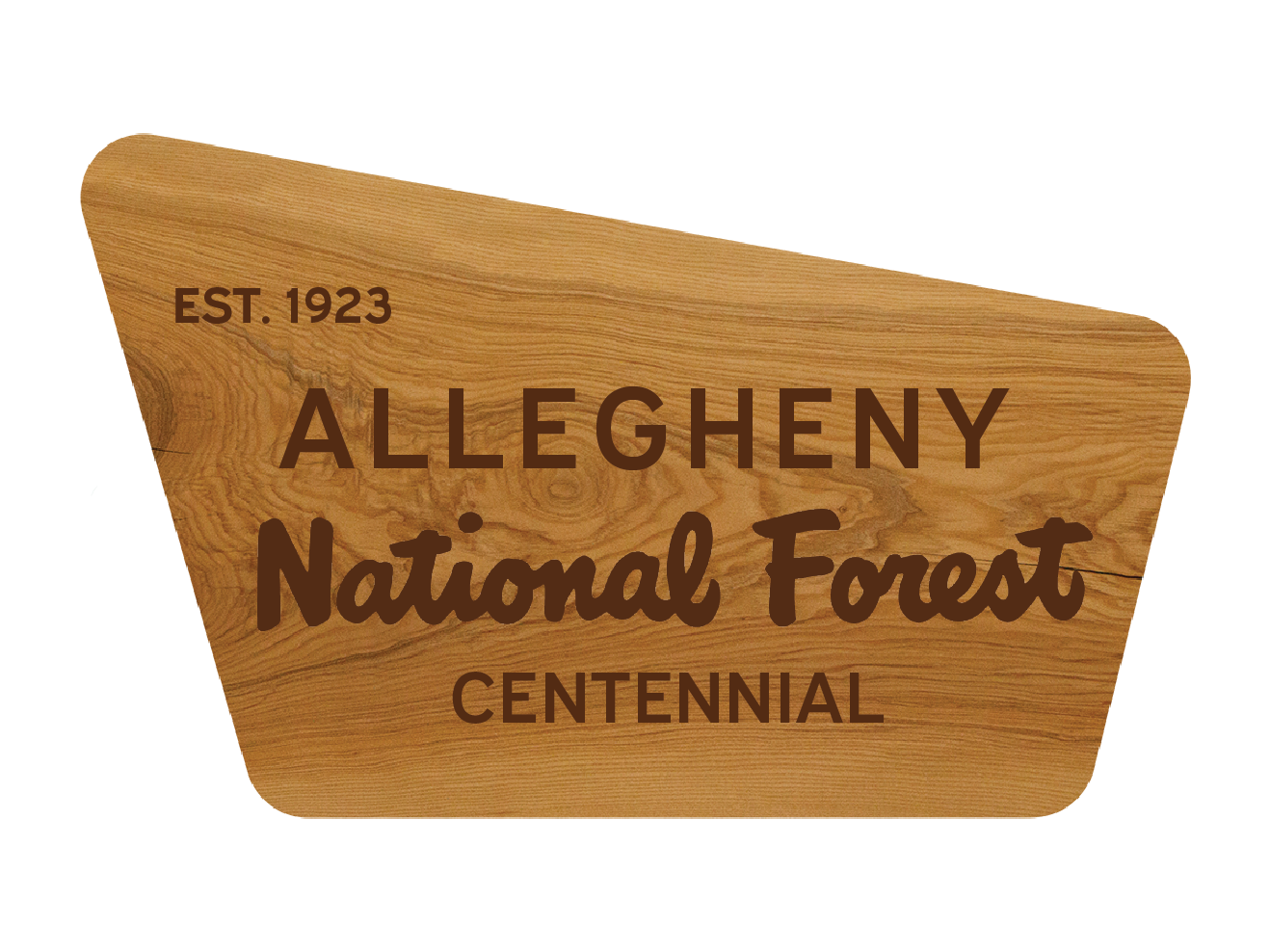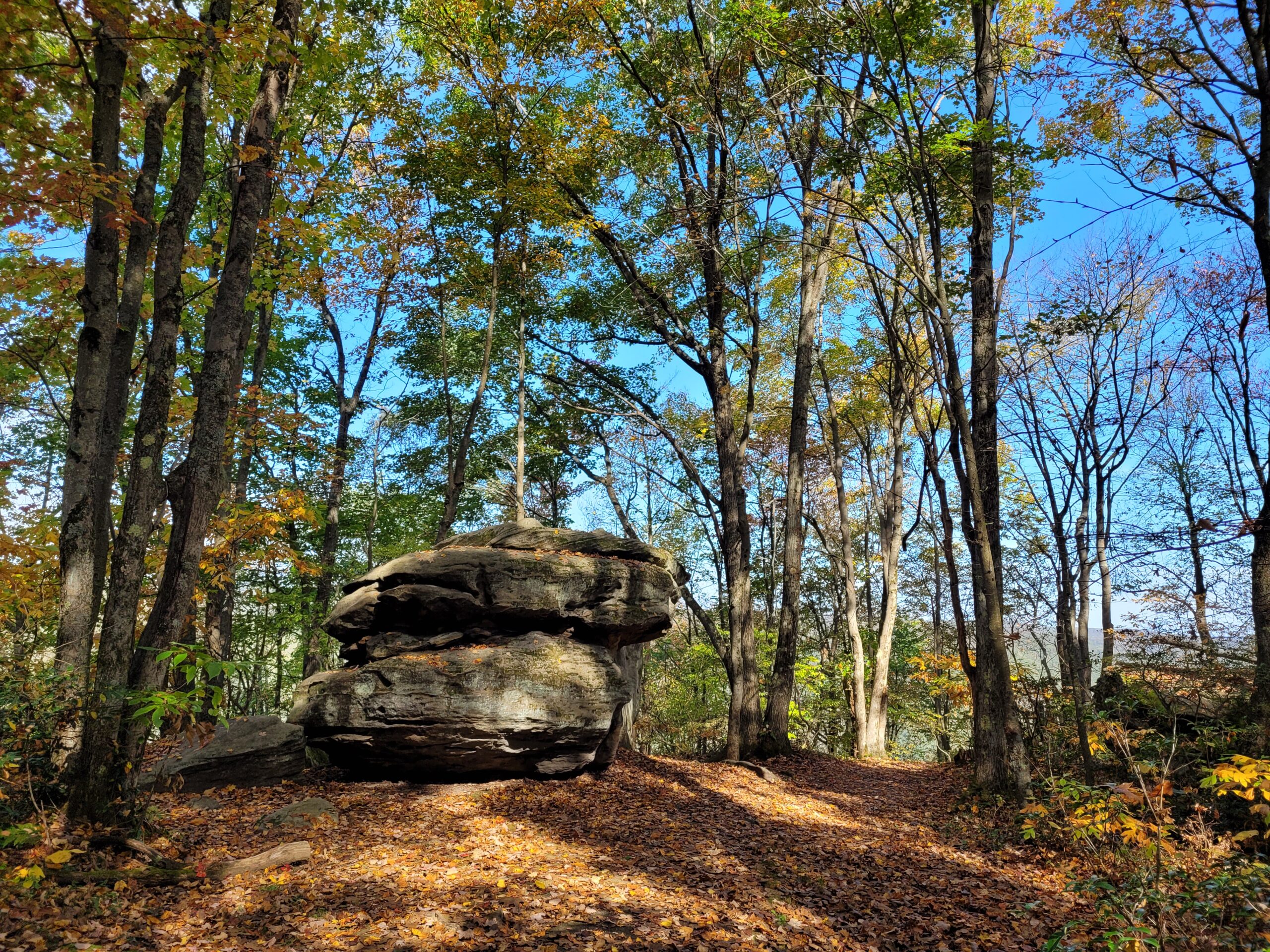With the simple stroke of a pen 100 years ago, President Calvin Coolidge signed a proclamation establishing the Allegheny National Forest (ANF). Thanks to President Coolidge and several other U.S. Presidents, you, me and many others get to enjoy the wonder of it all.
“While the Allegheny National Forest is dazzling in any season, it’s at its prime in autumn when the hardwood trees boast leaves in everything from fiery reds to burnt oranges to sunny yellows.” – Readers Digest
But back on September 24, 1923, it wasn’t dazzling at all. Far from it.
This enormous chunk of land, spanning four counties in the PA Wilds’ Allegheny National Forest and Surrounds landscape, was once known as “the Allegheny brush heap” after the lumber boom of the late 1800’s and early 1900’s stripped the land of trees resulting in near-total deforestation.
Also known as “The Pennsylvania Desert,” the lush mountain forests of Warren, Forest, McKean and Elk counties were gone — reduced to barren brush land. The damage was so severe that it was feared the forests would never recover. Brushfires raged, layers of topsoil eroded, and streams and rivers flooded.
Damage Control
Rushing to reverse this ecological disaster, President William Howard Taft signed the Weeks Act in 1911, giving the federal government the power to buy private land to protect rivers and watershed headwaters. In doing so, it paved the way 12 years later for creation of our Allegheny National Forest.
Another U.S. President, Benjamin Harrison, had the foresight to set up “forest reserves” to protect forestland. Authority of these forest reserves was handed over to the Department of Agriculture in 1905, and the U.S. Forest Service was created to manage them. Gifford Pinchot, future Pennsylvania Governor and close friend of President Teddy Roosevelt, was tapped to head the newly created U.S. Forest Service as Chief Forester.
When the U.S. Forest Service began managing the ANF in 1923, Black Cherry trees began to flourish in the forests, and Kane became known as “The Black Cherry Capital of the World.” The region’s furniture-making industry boomed. From the late 1800s to 1942, furniture companies, including several piano makers, prospered throughout the region.
The new National Forest got a tremendous boost in the 1930s during the Great Depression; President Franklin Delano Roosevelt created the Civilian Conservation Corps (CCC) that provided thousands of unemployed Pennsylvania men gainful employment.
The work of the “CCC boys” changed the face of the Allegheny National Forest forever. In 1933, the first of 14 CCC camps in the ANF was built at Duhring off Route 66 between Marienville and Kane. In the years that followed, the “CCC Boys” built dozens of recreational facilities, including Twin Lakes and Loleta Recreation.
Within only ten years after creation of the ANF, the hard work of the “CCC Boys” left an indelible mark on the new forest, and the U.S. Forest Service came up with what it felt was the perfect label for the new ANF: “Land of Many Uses.” It fit.
“Build it, and They Will Come” – Did They Ever!
Within driving distance of one-third of the nation’s population, the ANF began seeing vacationers arriving in droves in the mid-1930s with a steady stream of east-west traffic along scenic U.S. Route 6. By 1947, the ANF grew in popularity as post-WWII families discovered the joys of outdoor recreation in the new National Forest.
Through the 1930s, 40s and 50s, hunting and fishing camps popped up throughout the National Forest. Camps and vacation homes soon outnumbered permanent residences, especially in Forest County, “The Heart of the ANF.” Today, an estimated 75 percent of all habitable structures in Forest County are seasonal residences – and get this – Forest County ranks third in the United States with the largest percentage of vacation homes by county!
In 1965, creation of the Allegheny Reservoir and completion of the Kinzua Dam, one of the largest dams in the United States east of the Mississippi, brought a dramatic increase in vacationers and tourists. Surrounded by the ANF, the Kinzua Dam and the Allegheny Reservoir are one of the largest and most popular outdoor recreation areas in the northeastern United States. Reservoir development included campgrounds, boat launches, beaches, picnic areas, hiking trails and overlooks around the reservoir’s shoreline.
Photo: Kinzua- Allegheny Reservoir (photo courtesy of Tom Huntoon)
“The Allegheny National Forest is a nature lover’s dream. Located just three hours from Cleveland, this rugged landscape is worth the drive and the hike.” – Cleveland Magazine
Additional measures to protect the forests were well underway in the 1960s. Tionesta’s Howard Zahniser, the author of 1964’s National Wilderness Act, is a native of the ANF. Thanks to Zahniser, two wilderness areas in the ANF along with 110 million acres of wilderness areas across the USA are federally protected. Sadly, Zahniser never lived to see the Wilderness Act become law. He passed away of a heart attack just days before President Lyndon Johnson signed the Act into law.
In 1984, President Ronald Reagan signed the Pennsylvania Wilderness Act, which protected the ANF’s 8,350-acre Hickory Creek Wilderness Area and the 372-acre Allegheny Islands Wilderness, consisting of seven islands scattered along a 56-mile stretch of the Allegheny River between Warren and Tionesta.
In addition to those two wilderness areas, the ANF offers two National Scenic areas (Hearts Content and Tionesta), two national wild and scenic rivers (Allegheny and Clarion) and the 100-mile North Country Scenic Trail, which runs north-south through the heart of the National Forest.
“No other place in the U.S. northeast offers such a vast network of forests, rivers, rock formations and trails.” – The BBC (British Broadcasting Corporation)
Bordering the ANF just to the south is Cook Forest State Park, an 8,500-acre heavily wooded area along the Clarion River. Proclaimed a National Natural Landmark, Cook Forest State Park is known for virgin white pine and hemlock in beautiful “cathedral” timber stands.
“Black Friday” – Deadly Tornadoes Ravage the ANF
The resiliency of the ANF was severely tested on Friday, May 31, 1985, when tornadoes roared through Forest, Warren, and McKean counties, leveling homes and camps and wiping out an estimated $10 million worth of timber. (That’s nearly $28 million in today’s money!)
One of the tornadoes, a powerful F-5, hit with the force of an atomic bomb along Forest County’s German Hill Road and Ross Run Valley, killing seven people. In its aftermath, a horrific sight: Homes and camps were gone. Deer and other wildlife fled the forest, taking refuge in the roadways. Forest County Sheriff deputies, Forest Service employees and residents (both permanent and seasonal) worked for days cutting their way through 43 miles of timber-filled roads.
The 1985 tornadoes reduced 21 square miles of the ANF to mere splinters, including one square mile of the Hickory Creek Wilderness and a third of the Tionesta Scenic Area. A tornado that hit Tidioute narrowly missed Heart’s Content Scenic Area, home to the largest tracts of virgin beech and hemlock east of the Mississippi.
The following Tuesday, President Ronald Reagan signed emergency federal funding legislation. A Forest County Disaster Fund was set up.
It would take nearly two decades for the forest to recover. Fortunately, more than 90 percent of today’s ANF is covered in lush forests with most trees in the ANF’s second-growth forests now roughly the same age, 80 to 110 years old.
Another tornado in July of 2003 partially destroyed the Kinzua Viaduct, one of the longest and tallest railroad structures in the world at the time it was built in 1882, 2,053 feet long and 301 feet high. Wisely reinvented by the Commonwealth as a tourist walkway in 2011, visitors today stroll 600 feet out into the Kinzua Gorge on the remaining bridge with a view through a glass platform at the end of the Skywalk. A state-of-the-art visitors center with historical interactive displays and railway artifacts hosts thousands of visitors every year.
“From Recovery to Resilience – Celebrating 100 Years of Growth”
As the U.S. Forest Service marks the ANF’s 100-year anniversary, plans for celebrations are in the works. The theme of 2023’s Centennial celebration is “Allegheny National Forest Centennial – Recovery to Resilience, 100 years of Growth.”
To kick things off, the Forest Service is presenting a history-themed Facebook post each Thursday in 2023, highlighting ANF milestones and its important work. Additional Forest Service Facebook and Twitter posts will help keep the public informed about events to explore ANF’s history.
There is also a website, http://www.fs.usda.gov/goto/ANFCentennial. The webpage will feature a calendar of centennial events hosted by the Forest Service and its partners.
U.S. Forest Service Public Affairs Officer Christopher Leeser said the Forest Service is encouraging the public to “save the date” for the weekend of September 22-24, 2023.
“With our partners we are planning a weekend filled with events that will help to commemorate our establishment as a National Forest on September 24, 2023,” Officer Leeser explained. “Events in the planning stages include a Jakes Rocks Mountain Bike Trail Fest, a forest-themed juried art show, a forest-themed film festival, and a ‘birthday party’ on Sunday the 24th that will take place at one of our historic sites.”
He said local communities and businesses are also pulling together to put on a weekend of events that will offer something for everyone.
“There are many ways to experience the lush, natural beauty of the Allegheny National Forest: walk, hike, bike, boat, fish, kayak, ATV, camp or one of the many scenic driving tours. Immerse yourself in nature, aka ‘forest bathing,’ when visiting the ANF, which is a way to relax your mind, reduce stress and revitalize yourself as a means to overcome the unhealthy effects of our work environments and hectic lives.” – Recreation News
Here’s to the Next 100 Years
Since 1923, the U.S. Forest Service has brought new concepts into forest management. Today, we see a forest growing and changing, thanks to forest management, local communities and industry using science-based solutions, all working together.
Natural resources are being sustained to meet today’s needs and the needs of generations to come. The ANF is being managed for long-term multiple use and gives us hope for the future. It is a boon to recreation, tourism and the economy.
The U.S. Forest Service’s slogan “Land of Many Uses” captures a vision of a healthy, vigorous, working forest that supplies timber and wood products, watershed protection, access to underground minerals, ties to cultural history, a diversity of wildlife habitats and outstanding tourist recreation opportunities.
Today, the ANF is one of only fifteen national forests in the eastern United States and the only in Pennsylvania. With an abundance of clean air and clean water, it is a truly magnificent 514,000-acre, eight hundred square-mile National Forest, regarded as one of our nation’s greatest natural assets.
So, here we are, 100 years later, and Gifford Pinchot’s vision for our National Forests rings true: “To provide the greatest amount of good… for the greatest amount of people… in the long run.”
Related Articles
Year in Review: Top 10 PA Wilds blogs of 2024
Read MoreAllegheny River Cleanup receives 2024 Outstanding Wild and Scenic Rivers Stewardship national award
Read MoreANF snowmobile trails open for the winter season
Read More


